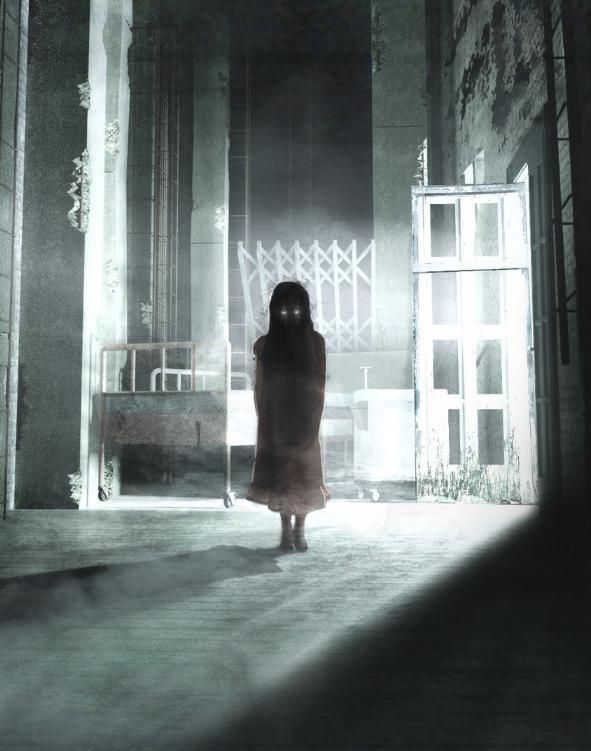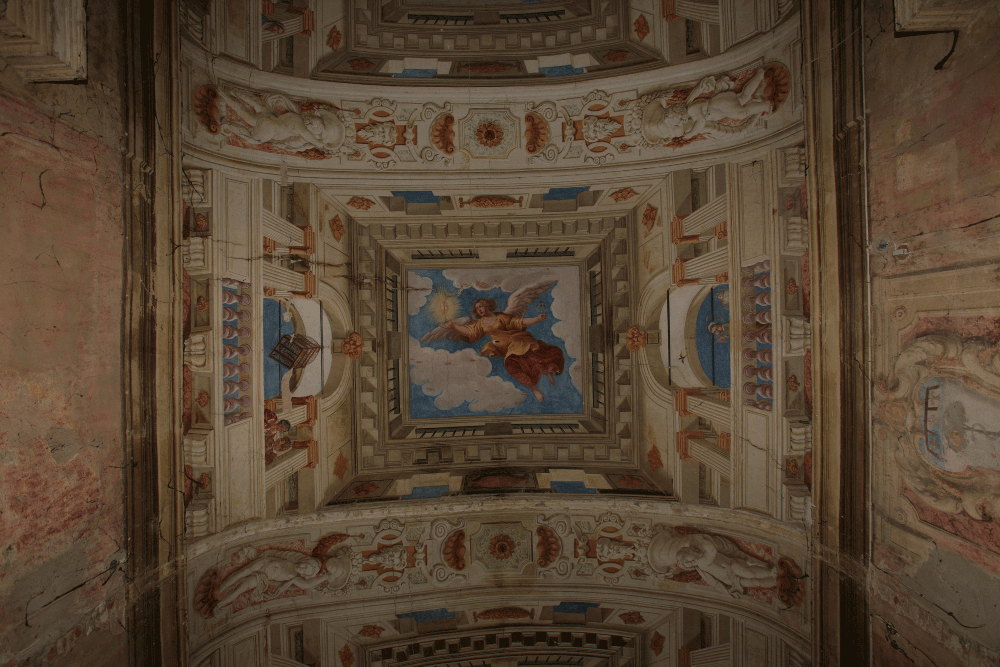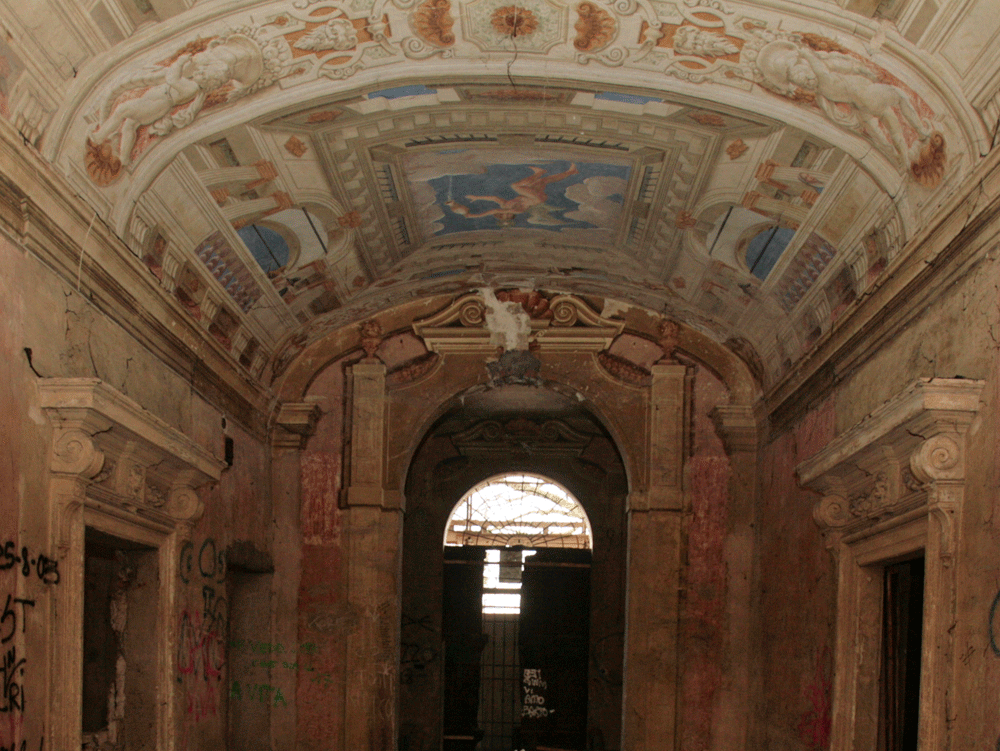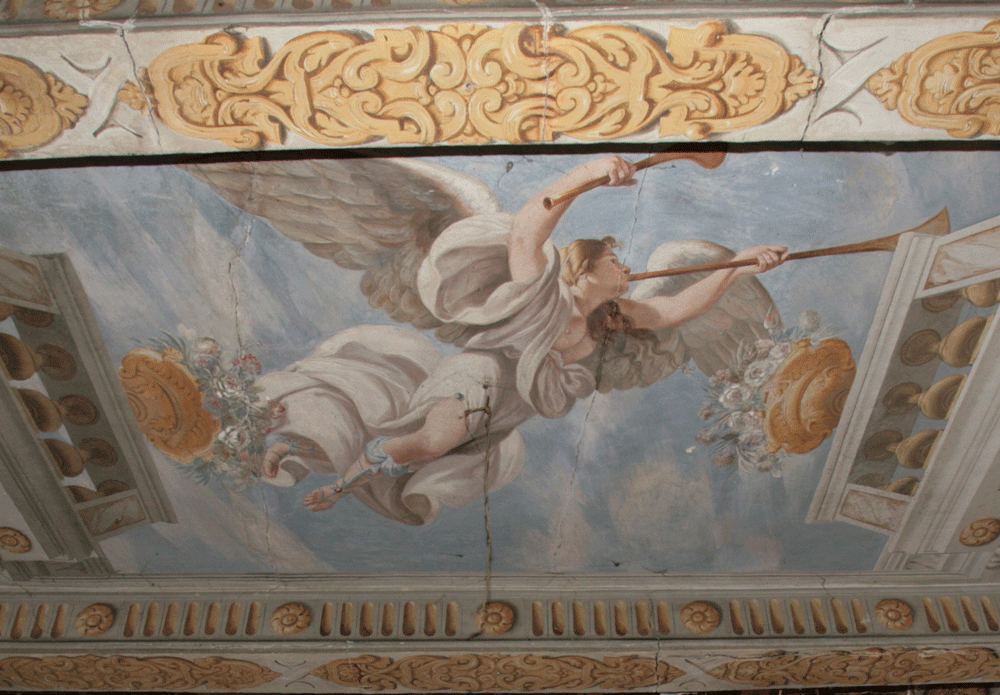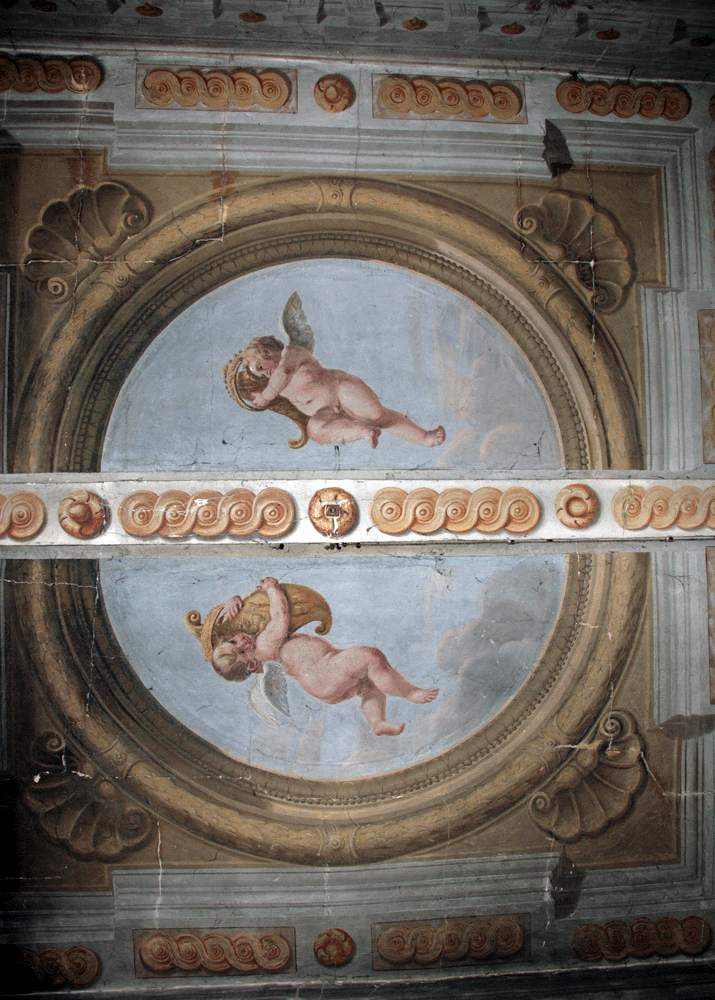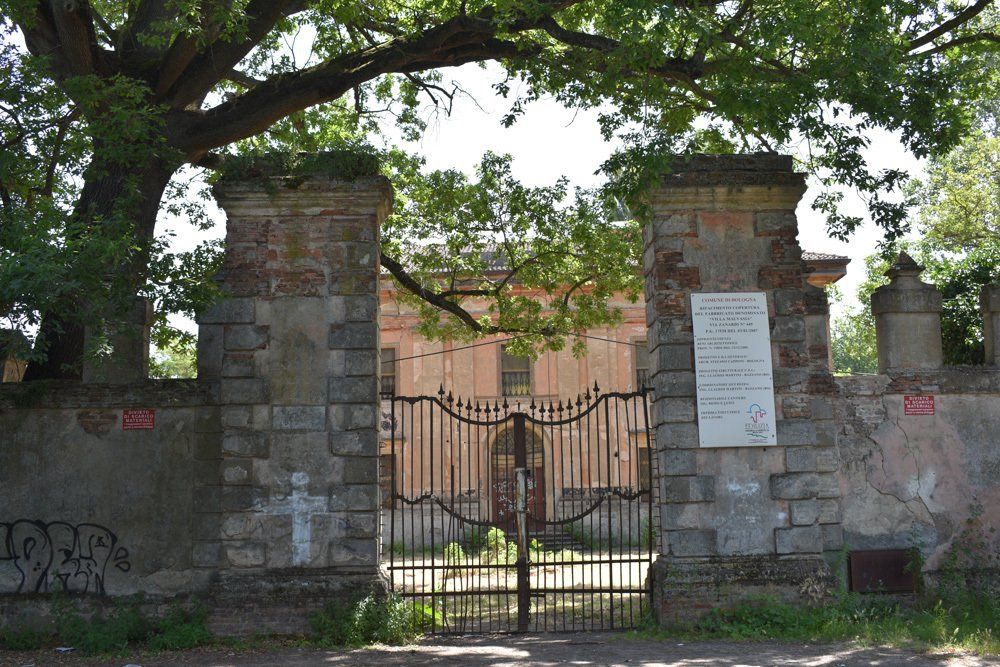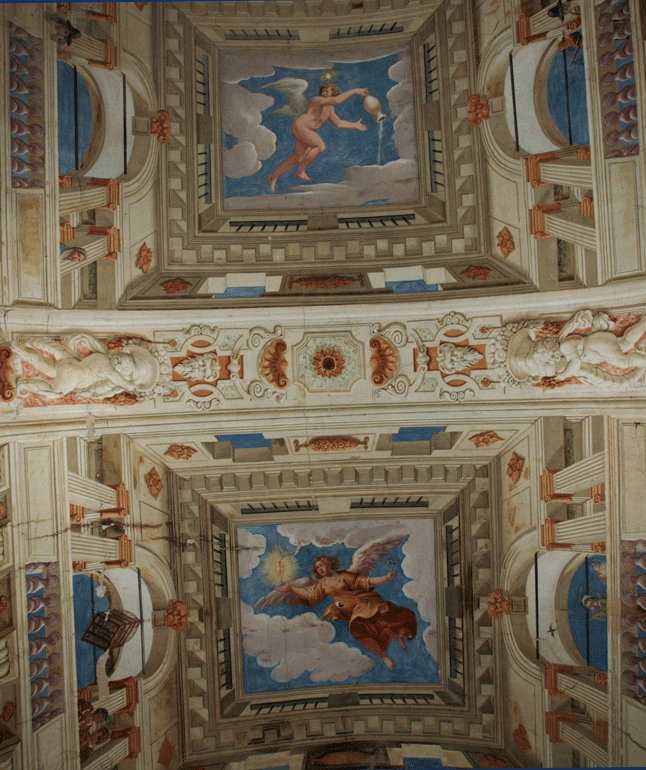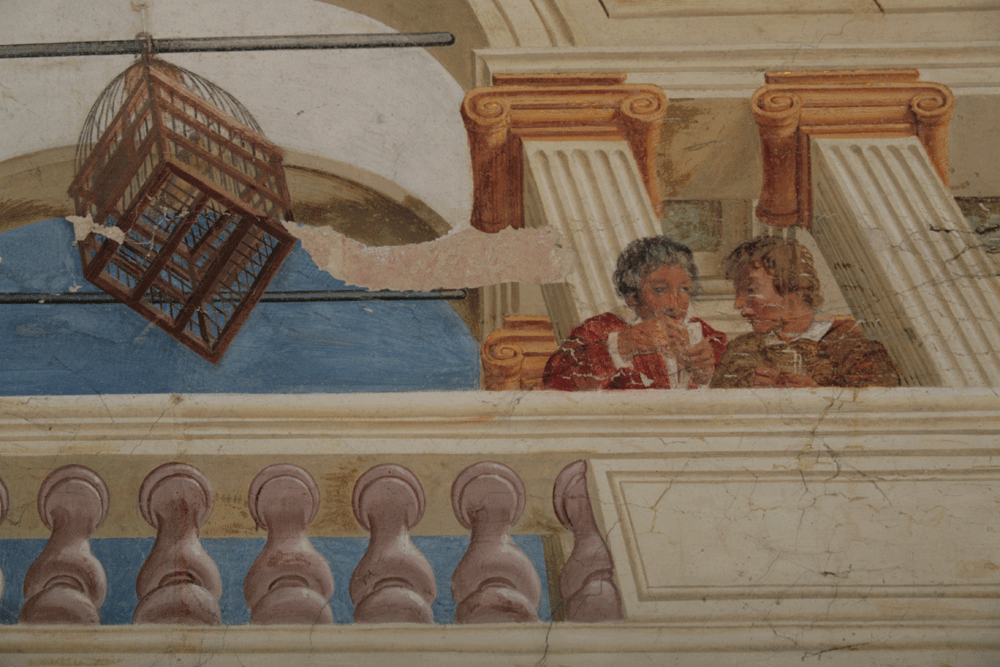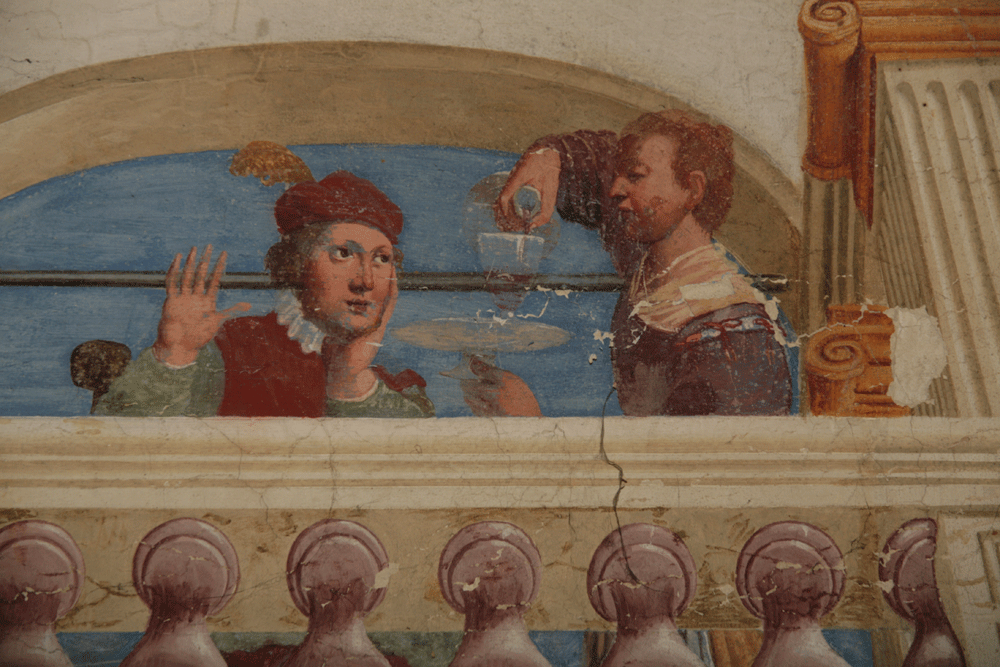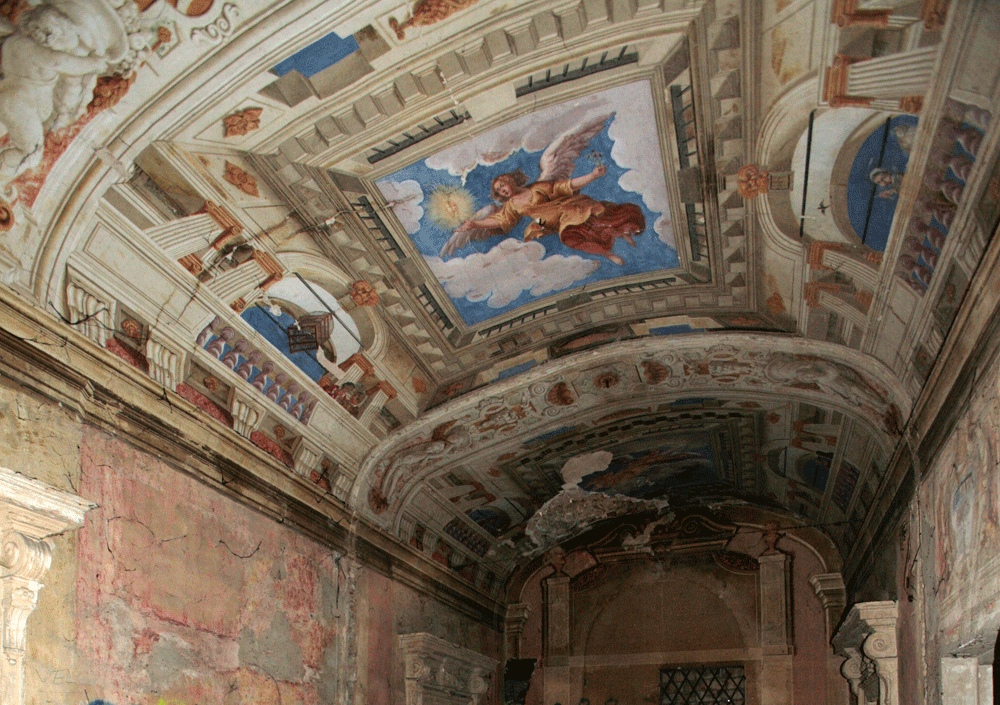Home
N
Villa Malvasia
The most fascinating and suggestive place in Bologna
The Villa Villa Malvasia dates back to the second half of the 17th century when it was built as a "hunting lodge". The coat of arms of Pope GREGORY XIII was placed in the villa with its high crenellated walls, according to the custom of the period of dating the construction with precise reference to the living Pope. Popularly better known as VILLA CLARA, it owes its true name to the most famous of its owners: the count, patron and historian of Bolognese painting Carlo Cesare Malvasia (1611-1693), who made it a hub of art and culture for many years and entrusted the task of frescoing it, with landscapes and genre scenes (mainly figures of angels) to the most important Bolognese artists of the period. Paintings that constitute one of the first and most significant examples of "quadratura", a decorative style that from Bologna would later impose itself throughout Europe and that bear the signature of famous painters such as Domenico Ambrogi (known as Meneghin del Brizio), Antonio and Franceschino Carracci, Valesio, Girolamo Curti (better known as Dentone) and Angelo Michele Colonna. The traces of the changes of ownership disappear at the end of the seventeenth century when, upon the death of Cesare Malvasia, the Villa was sold to the Arciconfraternita della Vita. Between the seventeenth and nineteenth centuries, testimonies of the owners who had been in the Villa were lost. During the twentieth century and in particular starting from the second post-war period, the Villa underwent a slow and inexorable decline. From 2006 to 2011, the Villa was completely redone in the structural part including the roof and the attics.
Paintings The perception and representation of space in Bologna and Romagna in the Renaissance; The hall, with its vault covered in fir boards yet illusionistically broken through and the presence of the painted frieze to act as a link between the ceiling and the walls, becomes a place of transition between consolidated sixteenth-century acquisitions and the new to which the artist was preparing to conduct the Bolognese quadratura. You can admire the skills of the young Angelo Michele Colonna (1606-1687), and of Domenico degli Ambrogi (1600-1678), both of whom with him created the Paleotta, Curti entrusted them with the creation of the figurative elements that animate the architectural scores of the hall. The extras that look out from the balustrade of the low gallery, the monochrome putti that run along the friezes are the work of Colonna, while Domenico degli Ambrogi, particularly versed in the landscape genre, asks for a dry finish of the frieze, opening up the surfaces framed by the medallions with airy aggressive perspectives.
Mysteries and Legends A true architectural jewel and also a mysterious place where one of the most beloved legends of the Bolognese still hovers. An evocative legend that circulates around the name of the villa, seems to have been born from a story of a little girl named Clara, who lived in the villa with her parents in the early 1900s. It is said that Clara was walled up alive in a room on the first floor by her father himself, who was exasperated by his daughter's paranormal powers. Around this story was born the legend of the ghost of a little girl who appears during particularly foggy nights in the courtyard of the villa, crying and calling for help. There were more and more groups of adolescents and young people who, prey to nightly monotony, threw themselves into the adventure of "going to villa CLARA" where who knows, perhaps they could meet a ghost...
CONTACTS
Fill out the following form to contact the owner,
Contact us
Thank you for contacting us. We will reply as soon as possible.
An error occurred while sending your message. Please try again later.
Villa Malvasia is a private property. Any access to the villa without the owner's authorization will be reported as Violation of domicile, the crime is revised by art. 614 of the penal code.
© 2025
All rights reserved | Villa Malvasia


